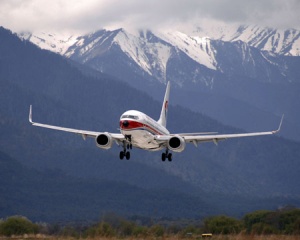European Commission to implement aviation emissions scheme

European Union officials have outlined the official figures to be used to calculate allowances offered to airlines when an emissions trading system begins in 2012.
Around 4,000 operators flying in and out of Europe will be forced to enter the emissions cap-and-trade scheme and required to adhere to emissions targets or buy additional carbon allowances to cover any excess emissions.
A figure of 219,476,343 tonnes of CO2 has been set, representing the average of the estimated annual emissions for the years 2004, 2005 and 2006 of all flights that would be covered by the EU ETS performed by aircraft operators to and from European airports.
Based on this figure for average annual aviation emissions in 2004-2006, the number of aviation allowances to be created in 2012 amounts to 212,892,052 tonnes of CO21, and the number of aviation allowances to be created each year from 2013 onwards amounts to 208,502,525 tonnes2 of CO2.
Over 80 per cent of the allowances will be given free to aircraft operators, with a further 15 per cent auctioned and three per cent set aside for distribution to new entrants.
Connie Hedegaard, European Commissioner for Climate Action, said: “Emissions from aviation are growing faster than from any other sector, and all forecasts indicate they will continue to do so under business as usual conditions.
“Firm action is needed. By publishing the data on which allocations will be based, we prepare for the full inclusion of aviation in the emissions trading system.”
The calculation of historic aviation emissions was based on data from Eurocontrol – the European Organisation for the Safety of Air Navigation - and actual fuel consumption information provided by aircraft operators.
Additional calculations were carried out to account for fuel consumption associated with the use of the auxiliary power units (APUs) on aircraft at airports.
Individual airlines will hear how many allowances they have been allocated by the end of September.
The Association of European Airline (EAA) offered its lukewarm support to the scheme.
“The January 1st 2012 start date for European Union Emissions Trading Scheme is fast approaching, but there are still many critical areas which need to be resolved”, said EAA chairman Steve Ridgway.
“It is imperative the commission fixes these issues to ensure that the Emissions Trading Scheme works as always envisaged, and avoids creating unfair market distortions or undermining its environmental effectiveness.”
Background
EU emissions from aviation have increased fast – almost doubling since 1990.
It is estimated that one passenger, flying from Brussels to New York and back in economy class generates in the order of 800 kg of CO2.
To mitigate the climate impacts of aviation, the EU has decided to impose a cap on CO2 emissions from flights operating to and from EU airports.
From the start of 2012, some 4,000 aircraft operators arriving and departing in the EU will be covered by the EU ETS.
Like industrial installations, airlines will receive tradable allowances covering a certain level of CO2 emissions from their flights per year. Aviation represents around ten per cent of greenhouse gas emissions covered by the EU ETS.
The inclusion of aviation in the EU ETS is expected to have only a minor impact on ticket prices.
If an airline would charge customers for the full CO2 price, with the current carbon prices, the price of an economy class return ticket from Brussels to New York would rise by some twelve euro.

